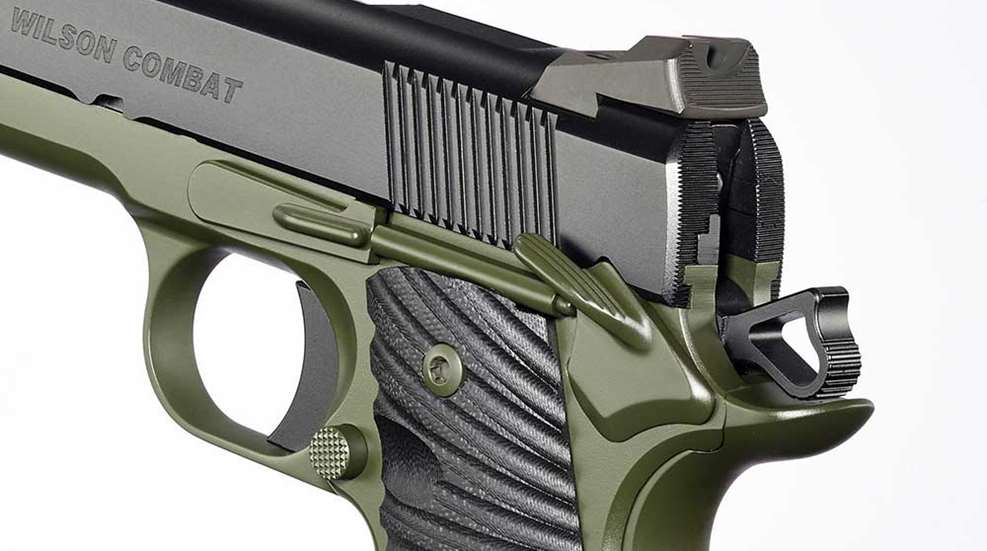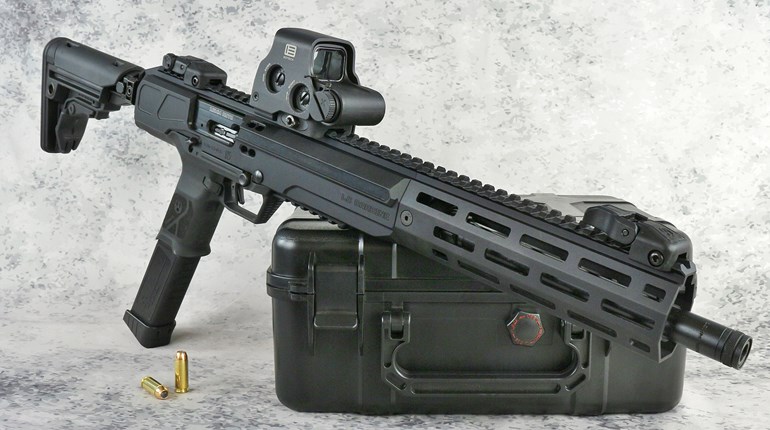
One of the most heated arguments involving handguns is the proper carry method of the 1911 semi-automatic pistol, or any other single-action semi-auto, such as the Browning Hi-Power. I’ve found that those who carry single-action pistols are relentless in their convictions, either adamantly for carrying them “cocked-and-locked" or carrying on an empty chamber.
Those who oppose carrying cocked-and-locked generally cite safety motives, arguing that, although the 1911 has two effective safety mechanisms, carrying the pistol cocked with a live round in the chamber just poses too many risks. Such carry might also offend certain people who likely don’t know much about firearms in the first place.
Many of these people claim that John Browning, the designer of the 1911 pistol, never meant the gun to be carried in the cocked-and-locked position. Personally, I don’t believe this to be true. Others have researched the works of famous firearms experts such as Major Julian Hatcher. Volumes could be written about Major Hatcher and his escapades in firearms testing for the military and his time as Ordnance Officer. His writings remain an important part of firearms history, and he split the difference in his early work, "Textbook of Pistols and Revolvers," discussing a middle-of-the-road, hammer-down carry method:
“…the .45 automatic is perfectly safe and the best way to carry it is with the hammer down on a loaded cartridge. Great care should be used, however, in lowering the hammer on to a live cartridge, and two hands should always be used for this job.”
The reason for this recommendation was cavalry-specific, as there was some worry that the safety would work its way out of position while being carried on horseback. Hatcher claimed that the 1911 pistol was difficult to manage while on a horse, since the gun required both hands to lower a hammer on a live round.
Hatcher’s explanation noted that carrying the 1911 with a loaded chamber and the hammer down was just one way of packing the gun. He goes on to say that another way to carry the pistol is with the hammer cocked and the safety on (cocked-and-locked), and this was the Army regulation way. He explained that this method avoids the danger of lowering the hammer on a live round, which is a tricky and dangerous business while on horseback.
I don’t recommend anyone carrying a single-action pistol with the hammer down on a live round. Like Hatcher, I believe lowering the hammer, which is obviously accomplished by pressing the trigger while lowering the hammer at the same time, is a dangerous proposition. I’ve known many shooters over the years who have carried a single-action, semi-automatic pistol on horseback, cocked-and-locked, with no incident. I suspect that carrying a cocked-and-locked semi-automatic pistol on horseback isn’t a concern to most users of the pistol these days, regardless.
In consideration of safety concerns, many shooters opt to carry the single-action semi-auto with the hammer down on an empty chamber. Such carry jettisons concern about the pistol discharging accidentally under any circumstances, and some push this so-called “Israeli-Carry” theory. Since elements of the Israeli forces carry their Browning Hi Power pistols with the hammer down on an empty chamber, it is thought in certain circles that this should be a standard procedure everywhere. Of course, the Hi Power has no grip safety–only the thumb safety.
I have tremendous respect for the Israelis, and I recognize that their carry method is safe and works for them. Yet I’m reminded that they are highly trained in this manner of carry, which involves drawing the pistol and very quickly and smoothly working the slide as the gun is brought to battery. This takes a great deal of practice to achieve mastery. Additionally, using this method is quite difficult, if not impossible, if your support hand is disabled or occupied in fending off an attacker. I’ve experimented with the method of carry on the range. With a great deal of practice, it can work in certain circumstances, but I don’t find it a practical approach to single-action semi-auto carry.
Carrying a single-action pistol cocked-and-locked is far and away the best method of carry. When carrying the gun in a holster, the grip safety will keep the gun from discharging, even if the thumb safety is somehow disengaged. Of course, I’ve known many 1911 shooters who “pin" or disengage the grip safety, mostly to affect trigger pull. I don’t recommend this modification to anyone who isn’t a true expert in handling the 1911.
Pack your single-action semi-auto cocked-and-locked with confidence.





































